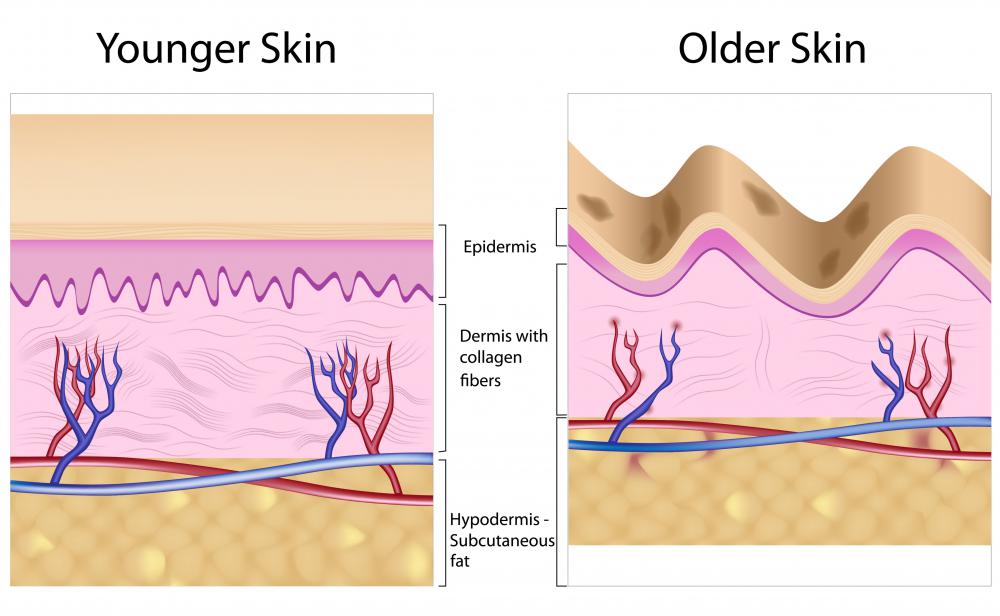At WiseGEEK, we're committed to delivering accurate, trustworthy information. Our expert-authored content is rigorously fact-checked and sourced from credible authorities. Discover how we uphold the highest standards in providing you with reliable knowledge.
What is Type I Collagen?
Type I collagen is the most common type found in the human body, as well as in other vertebrates. In fact, when the term collagen is used, it typically refers to this particular version. Collagen itself is made up of proteins and is found primarily in connective tissue.
Commonly found in scar tissue, type I collagen allows for the repair of the damaged tissue. This protein is also found in many other areas of the body, including bones, ligaments, and tendons. It is this type of collagen that determines the size and density of the bones.

Type I collagen is also predominant in other area of the body. Some of these areas include the liver, heart valves, cornea, lungs, and skin. Even items such as gelatin and leather are comprised of Type I Collagen. Collagen levels in the body are often measured and monitored by medical professionals in an effort to diagnose and treat some diseases and conditions. Among these are cancer, osteoporosis, fibrosis, and atherosclerosis. Diseases that can affect the collagen are present in both humans and animals.

A specific gene — COL1A1 — produces type I collagen. When there is a genetic mutation involving this collagen-producing gene, certain health conditions may become present. These can include conditions such as Ehlers-Danlos syndrome or Osteogenesis Imperfecta.
In the condition known as Ehlers-Danlos syndrome, a critical section of the gene is completely missing from the body. There are several types of Ehlers-Danlos syndromes, making the symptoms varied. The joints and skin are the most affected parts of the body. As such, there may be problems performing activities such as sitting or walking. Chronic pain and arthritis which develops at an early age may also be concerns with this condition.
In Osteogenesis Imperfecta, it is primarily the bones that are affected. This condition causes bones to break easily, even with the slightest activity. Vision problems and hearing loss sometimes appear as well.
Because of the ability of type I collagen to rebuild and repair various tissues of the body, supplements have become popular. These supplements claim to have an anti-aging effect on the skin and can be found in skin care preparations available over the counter, or even in the form of an injection provided by those specializing in this type of treatment. It is always wise to consult a health-care professional before beginning any new supplement regimen.
AS FEATURED ON:
AS FEATURED ON:












Discuss this Article
Post your comments